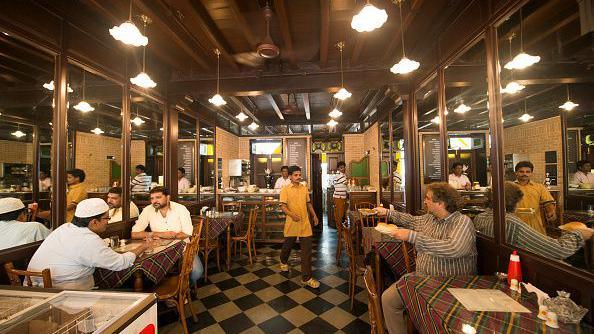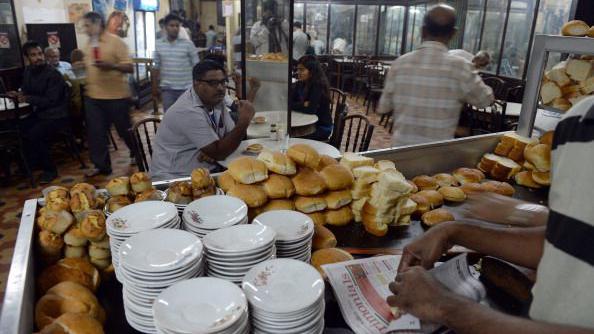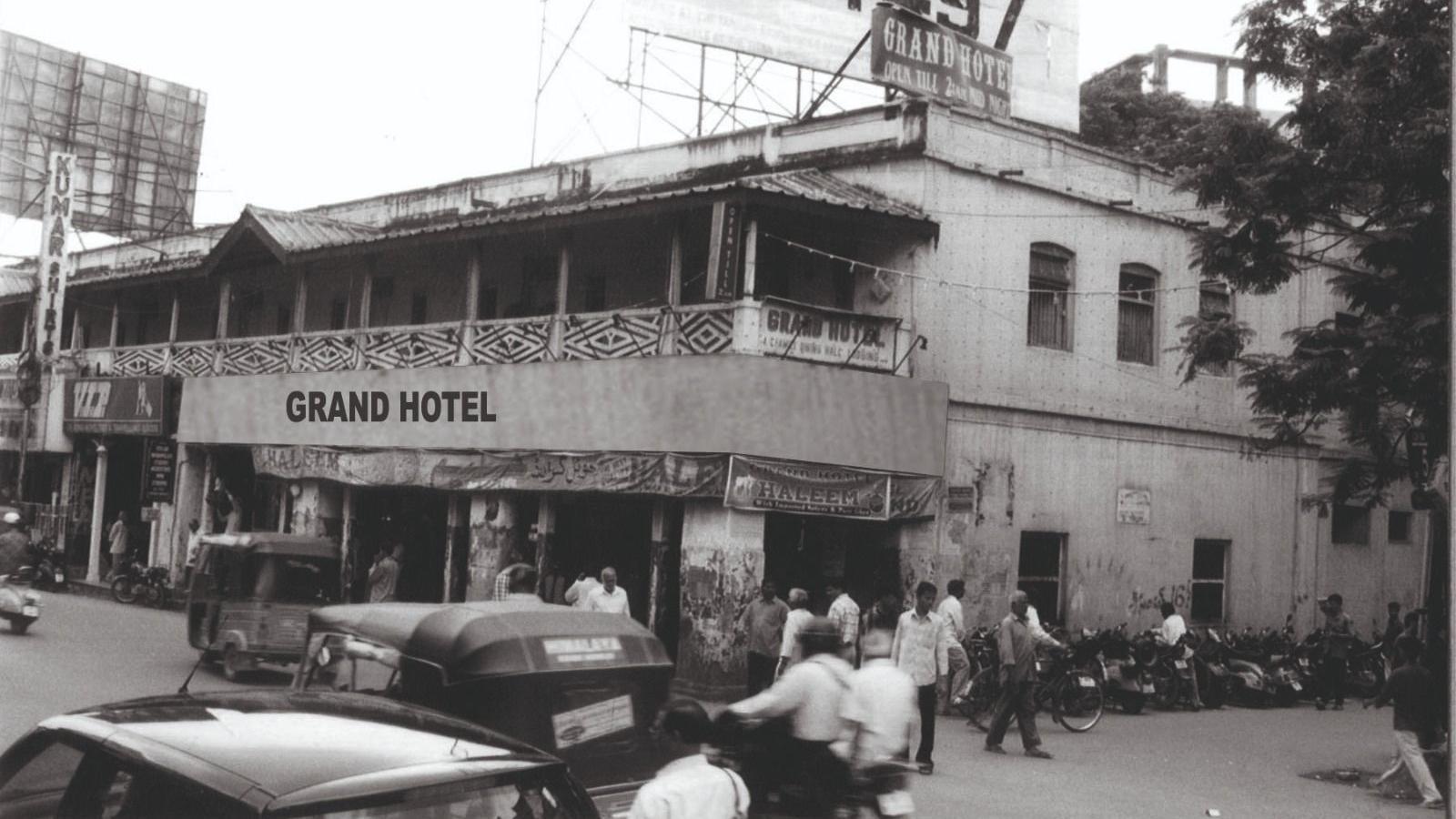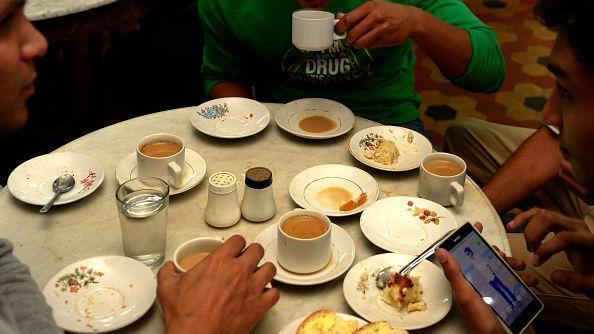Iconic Irani cafes serving creamy chai and fresh samosas face extinction in Indian city

There are hundreds of Irani cafes in Mumbai, Pune and Hyderabad
- Published
A lingering fragrance of bun maska (bread and butter), plates loaded with freshly cooked samosas and cups of piping hot and creamy Irani chai.
These are some of the sights you would typically find at a Persian-style cafe in India.
Popularly known as Irani cafes, these iconic restaurants - with their signature marble-topped tables, old-style clocks, chequered floors and a distinctive menu - have been a part of India's culture for more than 100 years.
And their influence has spread beyond India: Dishoom, one of London's most recognisable restaurant chains, was inspired by these cafes.
They came up in cities like Mumbai and Pune in the 18th and 19th centuries when there was an influx of Persian immigrants from Iran.
There's a third lesser known pocket of the country - the southern city of Hyderabad - where these cafes have been an intrinsic part of the local culture for decades.
But despite their many charms and the rich cultural heritage, the cafes of this city - like their counterparts in Pune and Mumbai - are on the verge of dying out, with owners blaming rising prices, competition from fast-food restaurants and changing consumer tastes.

Irani cafes have been an integral part of Hyderabad's culture and city life
Hyderabad has the highest number of Irani cafes after Mumbai even today. That's because the city was a centre for Iranian trade in the late 19th Century.
Persian was widely spoken under the rule of a Muslim Nizam, or prince. The Niloufer café, located in the old quarters of the city, was actually named after the Nizam's daughter-in-law, an Ottoman princess.
This was also a period when parts of modern-day Pakistan were still in India, with Iran as its neighbour, making the country easily accessible to Persian traders.
Most of the families who moved to Hyderabad - and other Indian cities - came to escape persecution and famine back home. Some came in search of better jobs and business.
Their arrival coincided with colonial rule when the British were actively promoting a tea drinking culture in the country.
When the Iranians arrived, they brought their own style of making tea giving rise to a distinct Iranian chai culture in the cities.
In Iran, people would drink it without milk, consuming it with a sugar cube in the mouth. Indians, however, would add milk and cream to the tea for taste.
"At first, the tea was sold under the name Chai Khana and only Muslims drank it," Hyderabad-based historian Mohammed Safiullah says. "But soon, people from all religions caught on to its distinct flavour."
By the 20th Century, Irani cafes were present in every nook and corner of Hyderabad.
The customers would sip on the lip-smacking tea as they would spend hours chatting away at the coffee shops.
At some cafes, patrons would also be able to play their favourite songs on a jukebox for a small fee.
Historians say these cafes played a crucial role in breaking down social barriers and religious taboos and became an important part of the city's public life.
"Irani cafes in Hyderabad have stood as symbols of secularism," historian Paravastu Lokeshwar said. "The names didn't have any religious connotations. People of all religions and castes patronised them."

Persian-style cafes first came up in India in the 18th and 19th centuries
Now they are under threat.
From an estimated 450 cafes over two decades ago, Hyderabad now has only 125 left, said Jaleel Farooq Rooz, owner of The Grand Hotel, a famous Irani cafe.
Mr Rooz's maternal grandfather came from Iran in 1951 and took over the hotel that was started by 12 Iranians in 1935.
"We used to sell 8,000-9,000 cups a day once. Now we sell just 4,000 cups a day," he told the BBC.
He cites competition from fast-food chains as one of the reasons. Now one of the most rapidly developing Indian cities, Hyderabad was a quiet little town until the early 1990s. Things changed in the mid-90s, when the city joined the IT boom in India and became a powerhouse of the industry.
The transformation was accompanied by a slew of economic reforms in the country, which allowed global fast-food chains and cafes to penetrate the Indian market. Similar to Iranian cafes, these food joints also offered extended seating options, but with far better amenities and more options.

The Grand Hotel in Hyderabad has been a favourite of Irani chai lovers for decades
Mr Rooz said most Irani cafes operated from rented premises as they required large spaces where patrons could relax and unwind over tea.
But rising real estate prices in Hyderabad have forced many owners to move to other work.
"Inflation also took a toll. Tea powder and milk prices have risen three times compared to five years ago," he added.
Others say the number of Iranian families entering the business has also gone down.
"The current generation is not interested in the café and restaurant business. They prefer other jobs and many migrate to other countries," said the owner of popular Farasha Restaurant, Mahmood, who goes by only one name.
But despite the challenges, there are still a few in the business who continue to swim against the tide.
Syed Mohammed Razak manages the Red Rose Restaurant in Hyderabad. His grandfather migrated from Tehran and established the City Light Hotel in the 1970s. Later, Mr Razak's father started the Red Rose Restaurant.

Served with fresh buns, Irani chai is creamy and rich
An engineer and graphic designer by profession, Mr Razak admits that "selling just chai and biscuits" is neither easy, nor profitable.
He has now introduced new dishes to the menu to attract more customers and is using his graphic designing skills to expand business and promote it online.
"I want to continue my family's legacy," he said.
And it's not just the owners, there are also loyal customers - many of whom have been frequenting these cafes for generations - who say they would always come back for "another cup of Irani chai".
"Irani tea is a part of my life, I love the taste and drink it every time I step out," said Yanni, who goes by only one name and is a regular at the Grand Hotel.
"There is nothing like it even today."
This article has been corrected on 12 August 2024 to clarify that traditional Irani tea was not made with milk or cream.